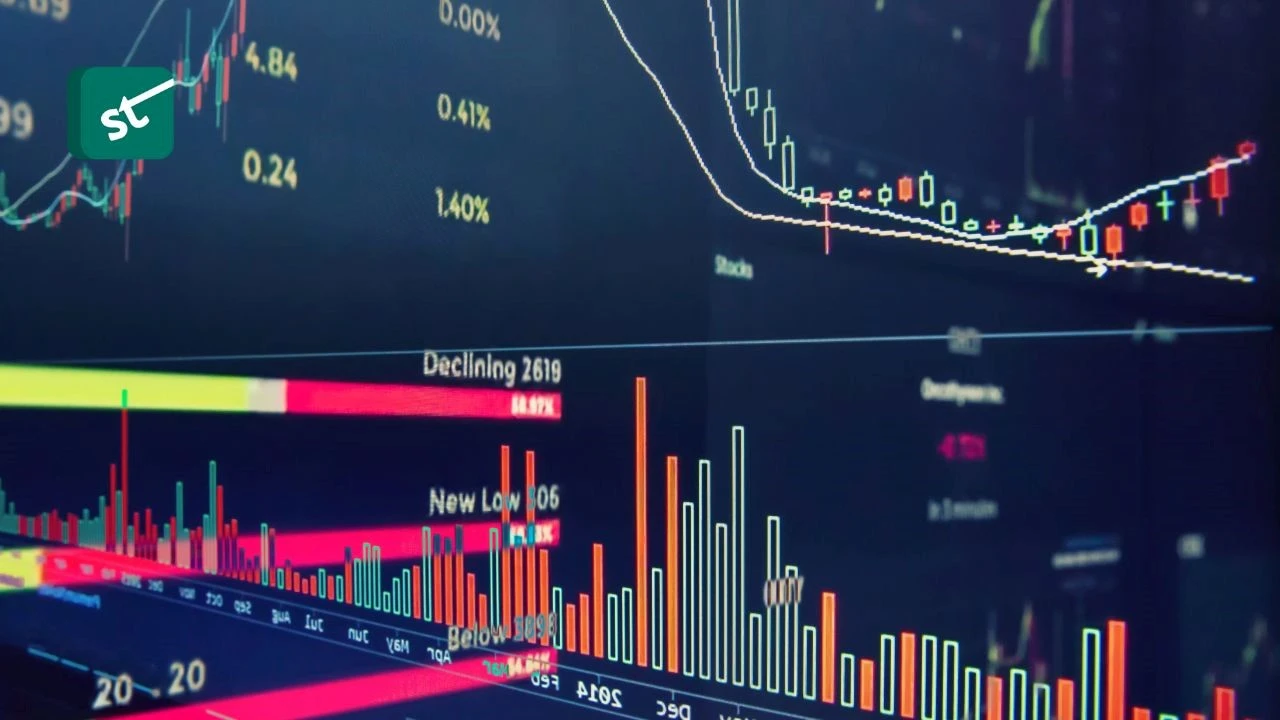The NASDAQ, a global electronic marketplace for buying and selling securities, has become a popular destination for traders looking to invest in stocks, bonds, and other financial products.
But how to trade on NASDAQ can be a challenging and complex process, especially for new traders.
To succeed on this platform, traders need to have a deep understanding of the market, stay up to date on the latest trends, and develop a sound trading strategy that works for them.
The article How to trade on Nasdaq explores some tips and strategies that can help traders execute their trades effectively and navigate the fast-paced world of NASDAQ trading.
Whether you’re a seasoned pro or just starting out, these tips can help you achieve your trading goals and maximize your profits on the NASDAQ.
What Is Nasdaq?
NASDAQ, or the National Association of Securities Dealers Automated Quotations, is an American stock exchange that was founded in 1971.
It is now the second-largest stock exchange in the world by market capitalization, second only to the New York Stock Exchange (NYSE).
The NASDAQ is a fully electronic marketplace where buyers and sellers can trade stocks, bonds, options, and other securities.
It is home to many of the world’s largest technology companies, such as Apple (AAPL), Amazon (AMZN), and Facebook (META), as well as many smaller innovative companies.
NASDAQ operates 24 hours a day, five days a week, and provides investors with access to real-time market information, news, and analysis.
In addition, NASDAQ offers various listing services to help companies go public and raise capital, making it a crucial platform for the growth and development of many businesses.
Which Companies Are in The Nasdaq 100?
The Nasdaq 100 is a stock market index that tracks the performance of 100 of the largest non-financial companies listed on the Nasdaq stock exchange.
It is a popular benchmark for technology and growth stocks and is widely followed by investors and traders around the world.
Let’s explore the composition of the Nasdaq 100 and its significance in the financial markets.
-
What Does the Nasdaq 100 Measure?
The Nasdaq 100 is designed to measure the performance of the largest and most actively traded companies listed on the Nasdaq exchange.
Unlike other major indices, such as the S&P 500 or the Dow Jones Industrial Average, the Nasdaq 100 focuses primarily on technology, biotechnology, and other growth-oriented sectors.
It includes companies from various industries, including software, hardware, internet, telecommunications, retail, healthcare, and more.
The index provides investors with a snapshot of the performance of the technology and growth sectors within the broader stock market.

-
How Often Does the Nasdaq 100 Change?
The composition of the Nasdaq 100 is evaluated and adjusted periodically to ensure it accurately represents the largest and most influential companies listed on the exchange.
The Nasdaq Stock Market conducts an annual review in December, during which it assesses the eligibility and ranking of companies based on market capitalization and trading volume.
Additionally, the index is re-ranked quarterly in March, June, September, and December, with the rebalancing taking effect in the following month.
This frequent evaluation allows for the inclusion of new companies that have gained prominence and the removal of those that no longer meet the criteria.
-
A Brief History of The Nasdaq 100
The Nasdaq 100 was first introduced on January 31, 1985, by the Nasdaq Stock Market, then known as the National Association of Securities Dealers Automated Quotations.
At its inception, the index included 100 of the largest companies listed on the Nasdaq exchange.
Over time, the Nasdaq 100 has become synonymous with the technology industry, as it includes many of the most iconic and influential technology companies in the world.
Since its launch, the Nasdaq 100 has undergone several changes to adapt to the evolving nature of the market.
In 1998, the index started using a modified market capitalization weighting methodology, which allows for a more accurate representation of the market value of included companies.
This methodology gives larger companies a greater influence on the index’s performance.
-
What Are the Nasdaq 100’s Trading Hours?
The Nasdaq 100, like the broader Nasdaq Stock Market, operates on a trading schedule that spans weekdays, Monday through Friday.
The regular trading hours for the Nasdaq 100 are from 9:30 a.m. to 4:00 p.m. Eastern Time (ET).
These hours coincide with the trading hours of the New York Stock Exchange (NYSE) and most other major U.S. stock exchanges.
In addition to regular trading hours, the Nasdaq 100 also offers pre-market and after-hours trading sessions.
The pre-market session begins at 4:00 a.m. ET and lasts until the market opens at 9:30 a.m. ET. The after-hours trading session starts at 4:00 p.m. ET and concludes at 8:00 p.m. ET.
During these extended hours, investors can trade Nasdaq 100 stocks outside of the regular trading hours, allowing for increased flexibility and potential opportunities.
How To Trade On Nasdaq For Beginners?
When to buy and sell stocks can be overwhelming for beginners, but with accurate knowledge and planning, anyone can learn how to trade on the Nasdaq successfully. Here are some tips to get started:
-
Educate Yourself
Before you start trading, it’s important to educate yourself on the basics of the stock market and trading. You can find many free resources online, such as articles, videos, and webinars.
-
Open A Brokerage Account
To trade on NASDAQ, you’ll need to open a brokerage account with a registered broker. Do some research to find a reputable broker that meets your trading needs.

-
Develop A Trading Plan
A trading plan is essential for any successful trader. Determine your goals, risk tolerance, and trading strategy before making any trades.
-
Use A Demo Account
Most brokers offer demo accounts, which allow you to practice trading without risking any real money. This is a great way to test your trading strategy and gain confidence before trading with real money.
-
Start Small
When you’re ready to start trading with real money, start with a small amount and gradually increase your investments as you gain experience and confidence.
-
Control Your Emotions
Trading can be stressful, and it’s important to control your emotions and avoid making impulsive decisions. Stick to your trading plan and avoid letting your emotions cloud your judgment.
-
Tips For Successful Forex Trading
Forex trading can be a highly rewarding endeavor, but it requires knowledge, discipline, and a strategic approach.
Whether you’re a beginner or an experienced trader, these tips can help you enhance your chances of success in the forex market.
Tips For Successful Forex Trading |
|
| Tips |
Effects |
| Education And Research | Gain a solid understanding of forex fundamentals, technical analysis, and market trends. Stay updated on economic news and events that impact currency movements. |
| Develop A Trading Plan | Create a well-defined trading plan with clear goals, risk management strategies, and entry/exit criteria. Stick to your plan and avoid impulsive decisions based on emotions. |
| Start With A Demo Account | Practice trading with a demo account to gain experience and test your strategies before risking real money. This allows you to refine your approach without financial consequences. |
| Risk Management | Use proper risk management techniques, such as setting stop-loss and take-profit levels. Never risk more than a small percentage of your trading capital on a single trade. |
| Patience And Discipline | Forex trading requires patience and discipline. Avoid chasing quick profits and be prepared for both winning and losing trades. Stick to your strategy and avoid making impulsive decisions. |
| Keep Emotions In Check | Emotions can cloud judgment and lead to poor decision-making. Maintain a rational mindset and avoid letting fear or greed dictate your trading actions. |
| Continuous Learning | Forex markets evolve, and staying updated with new strategies and techniques is crucial. Continuously educate yourself through books, courses, and interacting with experienced traders. |
| Use Technical Analysis | Technical analysis tools, such as charts and indicators, can provide valuable insights into market trends and potential entry/exit points. Master a few key indicators to aid your decision-making. |
| Diversify Your Trades | Avoid putting all your eggs in one basket. Diversify your trades across different currency pairs and timeframes to minimize risk and maximize opportunities. |
| Regularly Review And Adapt | Monitor your trading performance regularly, analyze your trades, and learn from both successes and failures. Adapt your strategies as needed to stay ahead in the dynamic forex market. |
By following these tips and consistently honing your skills, you can increase your chances of achieving success in forex trading.
Remember, patience, discipline, and continuous learning are key to long-term profitability.
When To Buy And Sell Stocks?
Deciding when to buy sell stocks can be a challenging task, even for experienced investors. Here are some general tips that can help:
-
Buy Low, Sell High
This is the most basic principle of investing. You want to buy stocks when their prices are low and sell them when their prices are high.
-
Follow A Strategy
Develop a strategy that fits your investment goals and risk tolerance. This could include value investing, growth investing, or momentum investing, among others.
-
Consider The Company’s Financials
Before buying a stock, analyze the company’s financials, including its revenue, earnings, and debt. Look for companies with strong fundamentals and a solid financial position.
-
Keep An Eye On The Market
Keep close to the overall market trends and news that could affect the stocks you’re interested in.
-
Use Technical Analysis
Technical analysis involves studying charts and patterns to identify potential trends and price movements. This can help you determine when to buy or sell a stock.

-
Have An Exit Strategy
Determine your exit strategy before you buy a stock. This could include setting a target price, using stop-loss orders, or following a trailing stop strategy.
How To Check Nasdaq Fundamentals?
There are several ways to check the fundamentals of a stock listed on NASDAQ. Here are some methods you can use:
-
Company’s Investor Relations Page
Most public companies have an investor relations page on their website that provides information on their financials, including earnings reports, financial statements, and other disclosures.
-
SEC Filings
The Securities and Exchange Commission (SEC) requires all publicly traded companies to file quarterly and annual reports, as well as other disclosures, that can be accessed through their EDGAR database.
-
Financial News Websites
Websites like Bloomberg, Yahoo Finance, or CNBC provide up-to-date news and analysis of the market and individual companies, including key financial metrics like price-to-sales ratio (P/S ratio), earnings per share (EPS), and other financial indicators.
-
Fundamental Analysis Tools
Various online tools provide fundamental analysis, such as Morningstar, Zacks Investment Research, and Thomson Reuters. These platforms offer data on financial metrics and ratings, analyst reports, and other important information for investors.
-
Stock Screener
You can use a stock screener like Finviz, Yahoo Finance, or Google Finance to filter stocks by their fundamental metrics like market cap, P/E ratio, dividend yield, and more.
What Is the Nasdaq Trader?
The NASDAQ Trader is a web-based platform designed for market participants to access and manage their accounts on the NASDAQ stock exchange.
It is a secure online portal that provides users with real-time data and information related to trading activities, market news, and other market-related data.
The NASDAQ Trader platform offers a range of tools and services that not only help users how to trade on Nasdaq but also help them to manage their trading activities.
Those could be from order entry, market data, trade reporting, to other essential services.
Users can view their account balances, monitor their orders, and execute trades directly from the platform.
The platform also offers access to historical data, such as historical stock prices, trading volumes, and other market data.
All of that can be useful for analyzing market trends and making investment decisions.
What Is Nasdaq Forex?
There is no such thing as “NASDAQ Forex.”
NASDAQ is a stock exchange that primarily trades stocks, exchange-traded funds (ETFs), and other financial instruments, but it does not trade currencies directly.
Forex, on the other hand, refers to the foreign exchange market, where currencies are traded against each other.
The forex market is decentralized, and transactions take place between banks, financial institutions, and individual traders around the world.
While NASDAQ does not trade currencies directly, it does offer trading in currency ETFs, which are exchange-traded funds that track the performance of specific currency pairs.
For example, the Invesco CurrencyShares Euro Trust ETF (FXE) tracks the performance of the euro against the U.S. dollar.

These currency ETFs can be traded on the NASDAQ stock exchange like any other ETF, providing investors with exposure to currency markets without having to trade directly in the forex market.
In summary, NASDAQ is not a forex exchange, but it does offer currency ETFs that can provide investors with exposure to currency markets.
Conclusion
In a nutshell, the NASDAQ stock exchange is a mammoth hub of investment opportunities, boasting a vast array of financial instruments for traders to sink their teeth into.
But for beginners, grasping the skill of how to trade on NASDAQ is crucial, from navigating brokerage accounts to using market orders and limit orders like a pro.
Armed with thorough research and analysis, coupled with a sound trading strategy, investors can potentially reap huge rewards by trading on this dynamic exchange.
And while NASDAQ doesn’t dabble directly in the forex market, it does offer currency ETFs as a window into the world of currency trading.
FAQs
How Do You Trade Successfully On Nasdaq?
How to trade on Nasdaq successfully involves a combination of research, analysis, and discipline. Here are some tips to help you trade successfully on NASDAQ:
-
Conduct Thorough Research
Before making any trades, it’s essential to conduct thorough research on the company or stock you’re interested in. This includes analyzing financial statements, reading news articles and industry reports, and studying technical charts.
-
Develop A Sound Trading Strategy
A sound trading strategy should be based on your investment goals, risk tolerance, and market conditions. It’s important to develop a plan that includes entry and exit points, risk management techniques, and a clear understanding of your trading goals.
-
Use Stop-Loss Orders
Stop-loss orders can help limit your losses in case the market moves against you. By setting a stop-loss order, you can automatically sell a stock if it reaches a certain price point, thereby limiting your losses.
-
Practice Discipline
Successful trading requires discipline, which means sticking to your trading strategy and avoiding emotional reactions to market fluctuations. It’s important to remain patient and avoid making impulsive decisions based on short-term market movements.
-
Diversify Your Portfolio
Diversification is essential to managing risk, which means investing in a variety of stocks across different sectors and industries.
-
Stay Up-To-Date On Market News
Staying up-to-date on market news and developments can help you make trading decisions. This includes monitoring earnings reports, industry news, and other relevant information.
What Is The Best Timeframe To Trade Nasdaq?
The best timeframe to trade on NASDAQ can depend on your individual trading strategy and goals.
For day traders who aim to make quick profits by trading in and out of positions within a single trading day, the best timeframe may be the intraday timeframes, such as the 1-minute, 5-minute, or 15-minute chart.
These charts allow for quick analysis and decision-making based on short-term market movements.
However, for swing traders who aim to hold positions for a few days to a few weeks, longer time frames such as the daily or weekly charts may be more appropriate.
These charts provide a bigger picture of market trends and can help traders identify longer-term opportunities.
What Is The Best Indicator For Nasdaq?
There is no single “best” indicator for trading on NASDAQ as the most effective indicators can vary depending on market conditions and individual trading strategies.
However, here are a few commonly used indicators that traders may find helpful when trading on NASDAQ:
-
Moving Averages
Moving averages are one of the most popular indicators for traders. They provide a smoothed-out average price over a certain period of time, allowing traders to identify trends and potential support and resistance levels.
-
Relative Strength Index (RSI)
The RSI is a momentum indicator that measures the strength of a stock’s price action relative to its past performance. It can help traders identify overbought and oversold conditions and potential trend reversals.
-
Bollinger Bands
Bollinger Bands are a volatility indicator that uses a moving average and two standard deviations to create upper and lower bands around the price action. They can help traders identify potential breakouts or reversals.
-
Volume
Volume is not a technical indicator, but it is an important factor in analyzing market movements. High trading volume can indicate strong buying or selling pressure, providing insights into potential market trends.
Which Broker Is The Best In South Africa?
When it comes to finding the best broker in South Africa, there are several options worth considering.
With their robust platforms, competitive fees, and extensive market access, brokers like EasyEquities, Standard Bank Online Share Trading, and Absa Stockbrokers stand out.
Each offers unique features tailored to meet diverse investor needs.
When To Trade Nasdaq In South Africa?
When trading Nasdaq in South Africa, consider the time difference. Optimal trading hours are 3:30 PM to 10:00 PM local time, overlapping with the Nasdaq’s operational hours.
During this period, you can access real-time data and capitalize on market trends. Stay informed, use reliable platforms, and adapt your strategy accordingly.
Is Trading Nasdaq Profitable?
Trading Nasdaq can be profitable, given its diverse range of technology-focused companies. However, success depends on diligent research, risk management, and a solid trading strategy.
Volatility and market trends can impact profitability, making it crucial to stay informed. Expertise, discipline, and adaptability are key to harnessing the potential gains in Nasdaq trading.
Best Time Frame To Trade Forex?
The best time frame to trade forex depends on various factors such as trading strategy, personal schedule, and market volatility.
Short-term traders may prefer lower time frames like 1-minute or 5-minute charts for quick trades, while long-term investors may focus on daily or weekly charts for a broader perspective.
Additionally, trading during overlapping sessions of major financial centers like London, New York, and Tokyo often provides higher liquidity and increased trading opportunities.
Ultimately, finding the ideal time frame requires experimentation, adapting to market conditions, and aligning with individual trading goals.









